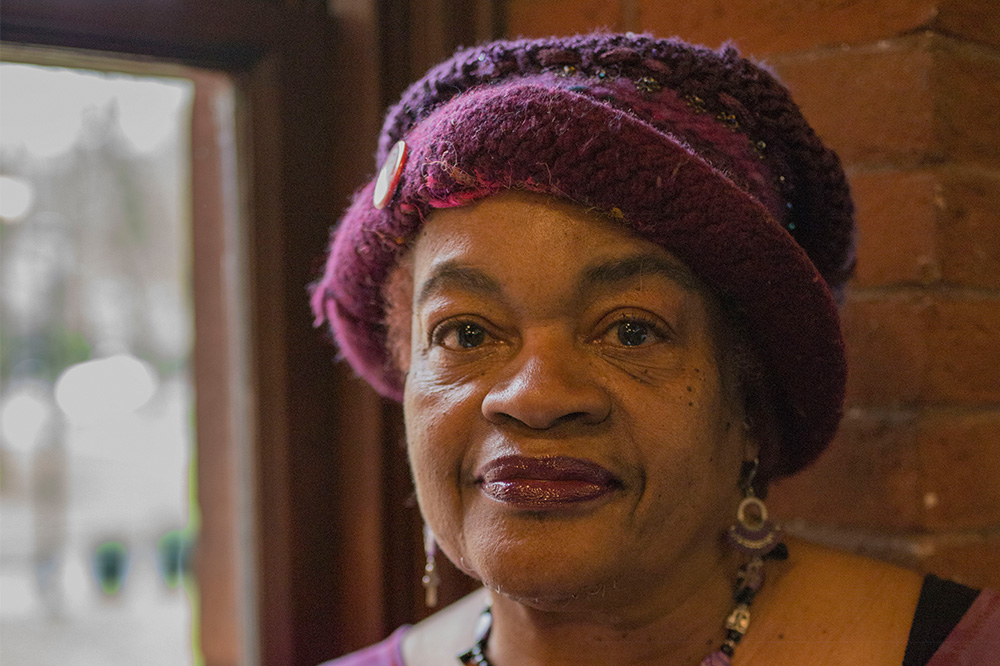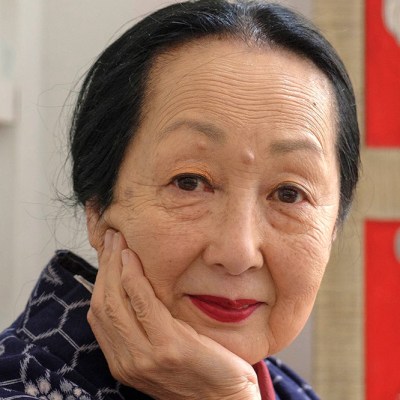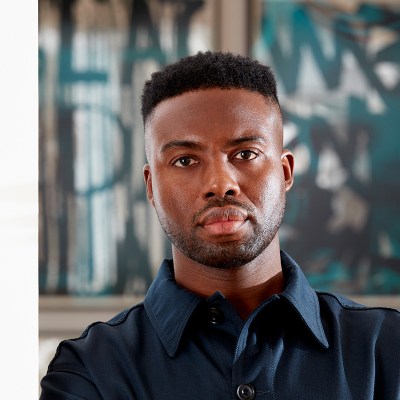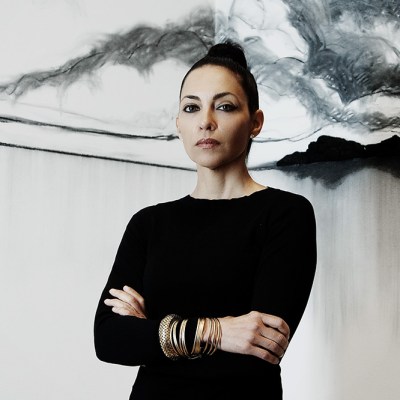The Philadelphia-based artist Dindga McCannon has been interrogating histories of oppression in Black communities for almost five decades. She played a vital role in the Black Arts Movement of the 1960s and ’70s, as one of only two female members of the influential Weusi Artist Collective, and was a co-founder of the artist collective Where We At Black Women Artists, Inc. alongside Faith Ringgold and Kay Brown. Saturated with vivid colours and patterns, her textile works, prints and sculptures shine a light on untold stories, Black activists and everyday heroines as well as her own family and friends. Her first solo exhibition in Europe titled ‘Dindga!’ at Pippy Houldsworth Gallery in London brings together a broad collection of historic and recent works.
Where is your studio?
At this point in time, I have two studios. I have a studio in the basement of my house [in Philadelphia] that sort of shifts depending on what I need: I’ve been known to take over the living room or the kitchen and everything in between. And then maybe a ten minute walk from me, there’s a building called BOK on South 9th Street. It’s an old school that has been repurposed into artist studios alongside some small manufacturers, about two or three restaurants and community spaces. I think we have a soccer team and a medical clinic – it’s a really interesting building.
Do you follow a particular routine when you’re in the studio?
I don’t usually like to have my studio outside my house because I like to get up in the morning, have a cup of coffee, a piece of bread and get to work. If I have to travel somewhere it means I have to get dressed, get the bus and get there. I find that very annoying. A lot of the time I have energy in the morning, but living in an urban neighbourhood you pass about 100 people before you’ve had a chance to get to work which messes with my mind. So I’ve always loved having a studio in my house or apartment, but I really needed a space where I could paint. When I found BOK, it was the perfect compromise. It’s not too far away and my studio has a huge window. As I live in an urban area, I can’t really open up the windows of my house to let the sunshine in.
Dancers #4 (2020), Dindga McCannon. Courtesy the artist, Pippy Houldsworth Gallery, London and Fridman Gallery, New York
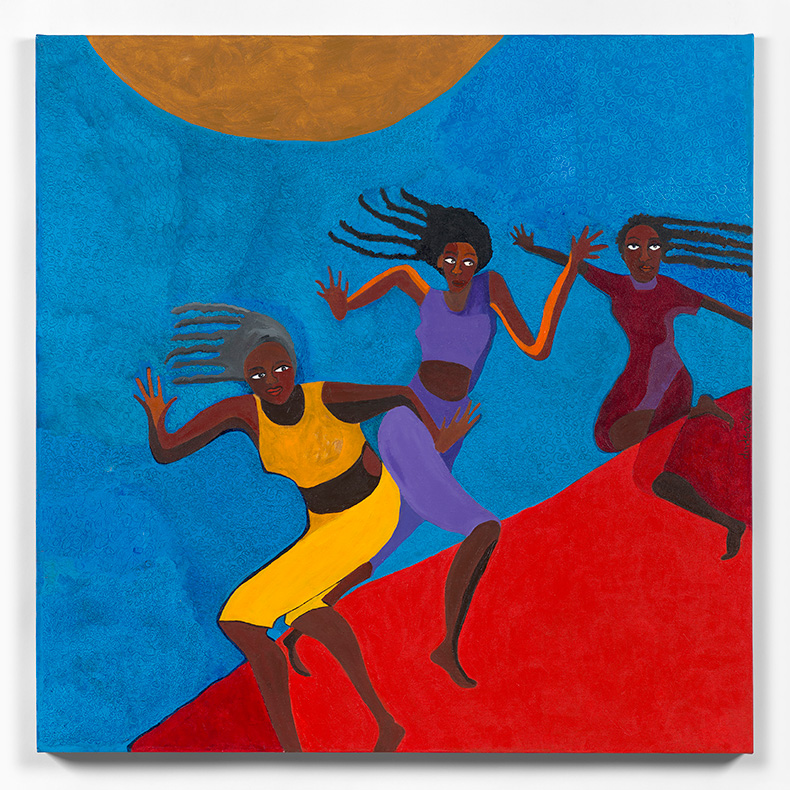
Do you interact with the other artists in the studio spaces?
Oh no – I have my own room. I was offered a shared space, but I didn’t want that. When you’re working you don’t need the energy of other people in your environment, it’s really about the conversation between me and the work I’m dealing with at that time. I find [other people] very distracting.
Do you listen to anything while you work?
Believe it or not, I listen to old BBC television programmes. I like the old TV shows like Poirot and there’s that detective show with the old folks… I’m not really watching, I think it’s watching me. But it’s good to have some kind of human connection while you’re working because you can spend long hours by yourself.
Musically, I listen to everyone from Bob Marley to John Coltrane and Usher.
The First Marquet for the Mural A United Community – Bushwick Brooklyn (1979), Dindga McCannon. Courtesy the artist, Pippy Houldsworth Gallery, London and Fridman Gallery, New York
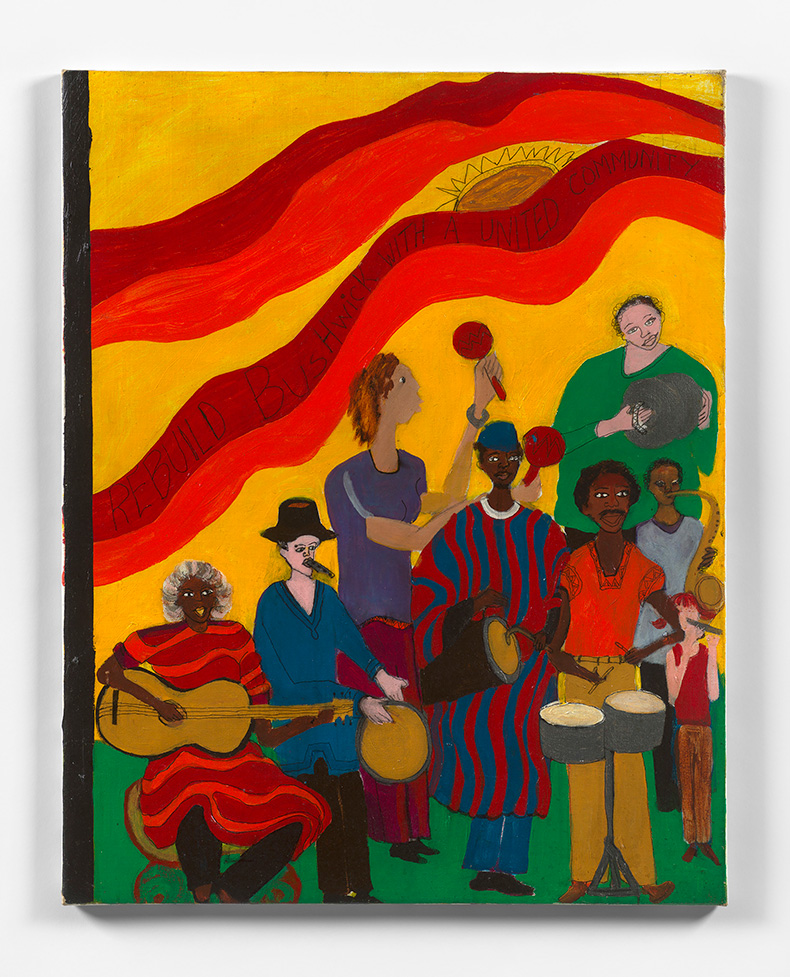
Which artistic tool could you do without?
The printing press. I got it about 6 or 7 years ago. I’ve chosen to print elsewhere because, in the basement where the press is, there’s so much fabric and other stuff that it just doesn’t work! If it disappeared tomorrow, I wouldn’t care much, but like most people, I tend to hang onto things.
Do you work alone?
Yes.
Is anything (or anyone) banned from your studio?
No, but very few people come [to my studio] other than immediate family and selected friends. First of all it’s a mess, although I’ve been very good this year at getting someone to help me organise it. And secondly it’s a private space – only a select few get invited.
Why Did it Take So Long? (Black Women in Aviation) (2012), Dindga McCannon. Courtesy the artist, Pippy Houldsworth Gallery, London and Fridman Gallery, New York
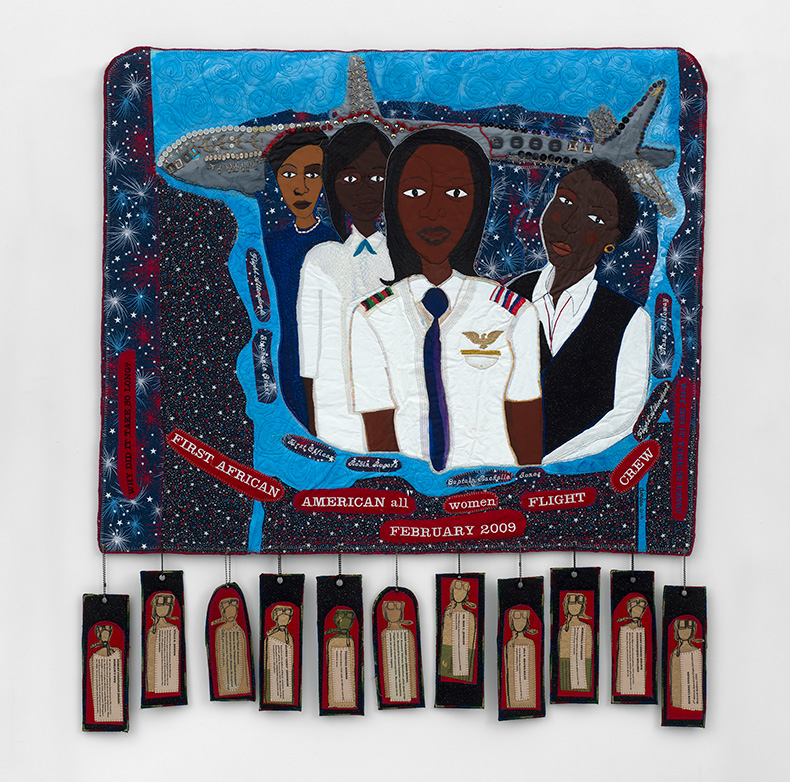
What’s your typical studio lunch?
I am a decent cook, but when I’m in the studio I won’t stop to cook because that breaks the energy. And when I eat a lot of food I just want to keel over and go to sleep! I will usually eat a sandwich and I’m a big fan of take-out – for some reason it’s only when I cook that I fall asleep. After lunch, I have another cup of coffee, my second cup, at around 3pm.
What are you currently reading?
I used to be an avid reader, but now I don’t read as much. The book I read the most is Blues Legacies and Black Feminist by Angela Davis. I think this was the first book [I read] when I started my series on Black women who were Blues artists. It’s a great reference point and I am always going back to it to refresh my mind.
I also love reading magazines. I spend so much time reading all kinds of arts magazine, thinking ‘Oh, I could do this or I could do that’ and learning techniques.
Do you pin up images around your studio?
The only thing I rip out of magazines are pictures of black women when I’m getting ready to do a drawing or a collage. I don’t want to be influenced by anything else, I really want my whole self to come out. It’s not a conscious thing, I just don’t do it.
What’s the weirdest object in there?
The washing machine and dryer. Who has a washing machine and dryer in their studio? A textile artist like myself. And a laundry room is at the end of the studio, so I can dye fabric and everything. I have said to people, ‘When I’m dying, I expect to die in the studio working on a project’.
Smoking Man (1967), Dindga McCannon. Courtesy the artist, Pippy Houldsworth Gallery, London and Fridman Gallery, New York
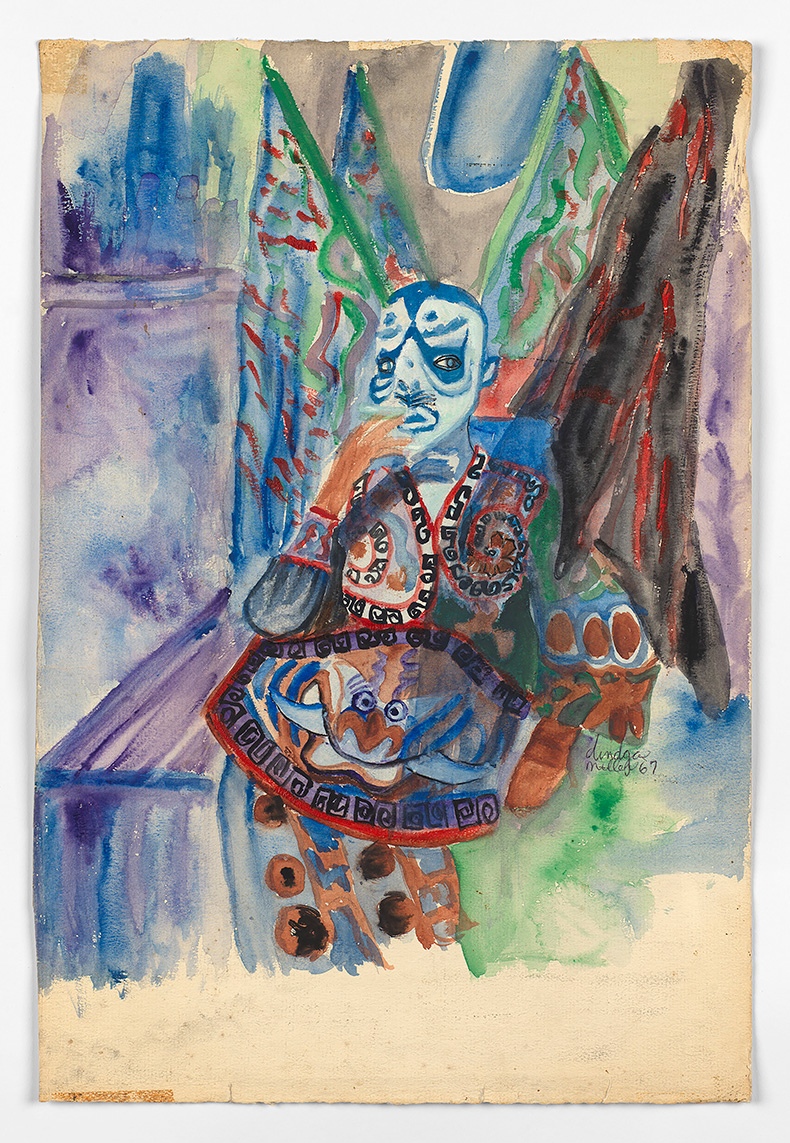
Are you an artist who likes to work late into the night?
I’m most prone to being a night owl the day before a piece is due to be exhibited and I am getting ready to travel somewhere. The rest of the time, I fluctuate. I usually get up at around 6am and half an hour later I’m down in the studio. Some of the things I work on keep me up and then I will take a nap. Sometimes my naps last way too long, but most of the time once I start working, I will continue.
As a single parent, I used to be more of a night owl. It was only after the kids went to sleep that I had the time to work – I would have three cups of coffee to keep me going because the days are long and I was often exhausted.
Sometimes the body is willing, but the spirit isn’t. Or maybe it’s the other way around. Sometimes I’m lying in bed thinking ‘I really want to get up and work’, but my body is saying ‘I don’t think so’. There’s nothing like the fresh energy you have when you wake up in the morning.
‘Dindga McCannon: Dindga!’ is at Pippy Houldsworth Gallery, London from 11 October to 12 November.
